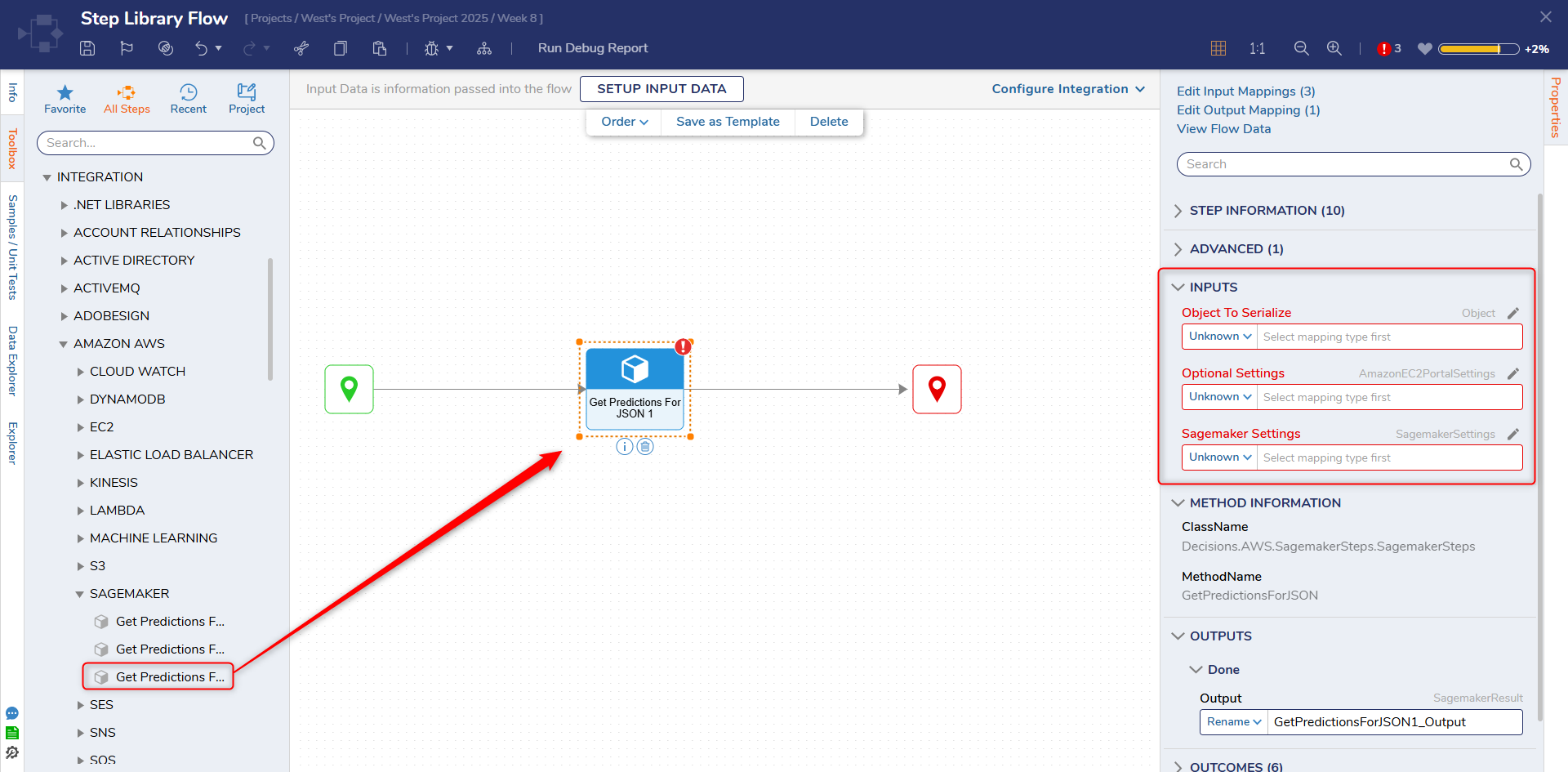| Step Details | |
| Introduced in Version | 8.0.0 |
| Last Modified in Version | 9.0.0 |
| Location | Integration > Amazon AWS > Sagemaker |
The Get Predictions For JSON step is used to send data from a JSON file to Sagemaker which will return a prediction.
Prerequisites
- This step requires the Amazon AWS Module to be installed before it will be available in the toolbox, and an active AWS account. The Amazon WebServices Settings must also be configured.
- A dependency must be created after installing the module in order for the the steps to be properly used.
Properties
Inputs
| Property | Description | Data Type |
|---|---|---|
| Object To Seralize | JSON object to make predictions for. | Object |
| Optional Settings | List of settings that can be established to set specific parameters. | AmazonEC2PortalSettings |
| Sagemaker Settings | Mandatory settings to establish in order to effectively predict CSV Text. | SagemakerSettings |
Outputs
| Property | Description | Data Type |
|---|---|---|
| Done | Outputted prediction for serialized JSON. | SagemakerResult |

Common Errors
Endpoint __________ of Account 000000000000 not found.
If the inputted enpoint found under Sagemaker Settings does not exist, the step will cause an error.
To correct this, change the endpoint input to be one that matches an endpoint inside a designated SageMaker domain.
Exception Message:
DecisionsFramework.BusinessRuleException: [BusinessRule] Error running Sagemaker model
---> System.AggregateException: One or more errors occurred. (Endpoint LastName of account 230575086277 not found.)
---> Amazon.SageMakerRuntime.Model.ValidationErrorException: Endpoint LastName of account 230575086277 not found.
---> Amazon.Runtime.Internal.HttpErrorResponseException: Exception of type 'Amazon.Runtime.Internal.HttpErrorResponseException' was thrown. at Amazon.Runtime.HttpWebRequestMessage.ProcessHttpResponseMessage(HttpResponseMessage responseMessage)
at Amazon.Runtime.HttpWebRequestMessage.GetResponseAsync(CancellationToken cancellationToken)
at Amazon.Runtime.Internal.HttpHandler`1.InvokeAsync[T](IExecutionContext executionContext)
at Amazon.Runtime.Internal.Unmarshaller.InvokeAsync[T](IExecutionContext executionContext)
at Amazon.Runtime.Internal.ErrorHandler.InvokeAsync[T](IExecutionContext executionContext)
--- End of inner exception stack trace ---Related Information
Related Article: